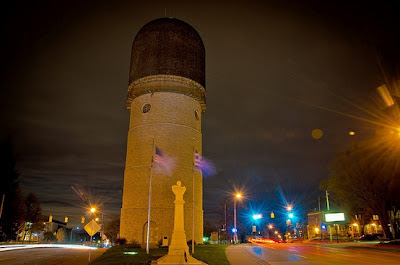In the Shadow of the Water Tower will be a true-crime account of what were known as “The Coed Killings” or “The Rainy Day Murders.” In the late 1960s seven young women were brutally murdered by what seemed like a phantom killer who spirited their bodies away until they were found dead, scattered within a fifteen mile triangular drop zone in the countryside just north of Ypsilanti, Michigan.
An Eastern Michigan University senior, one semester away from earning
his degree in elementary education, was charged with the sex-slaying of
eighteen year-old, Karen Sue Beineman. John Norman Collins was indicted, tried,
and found guilty of her murder in the first degree and given a life sentence in
Michigan prisons.
Evidence in the six other murders was never heard. Law enforcement “had their man.” Because Collins was only convicted of one murder, the sobriquet of serial killer does not officially apply, but his story is fascinating none-the-less.
Evidence in the six other murders was never heard. Law enforcement “had their man.” Because Collins was only convicted of one murder, the sobriquet of serial killer does not officially apply, but his story is fascinating none-the-less.
Beineman’s murder and the ensuing court case were not only local
and national news stories, but they also attracted some international
attention. In Canada, Collins is known as “The Canadian Hannibal Lector,” and
in Great Britain, he is known as “The Ypsilanti Ripper.”
The trial started on Monday, July 20th, 1970 and by
Saturday, the intense national media interest had shifted to the West Coast.
The Sharon Tate and La Bianca murders had hit the front page. Charles Manson
made better copy than John Norman Collins.
The Collins’ case has largely fallen through the cracks over
time - literally. Washtenaw County Court documents for this case have been “purged.”
Presently, my researcher and I are collecting every bit of information we can
lay our hands on and compiling a photo bank to accompany the finished text, a
feature missing from other treatments of this material.
We are piecing the story together from over 800 pages of
news articles from the time, and we have just make arrangements through the Freedom of Information Act to get over 1,000 pages of
documents from the Michigan Corrections Department regarding Collins and the
forty-five years he has been behind prison bars. That story has never been
told.
In addition to interviewing as many people as we can find who are
still alive and were connected with this case, we also are interested in people who knew any of
victims or their accused murderer, John Norman Collins. Some people came
forward with information at the time but were ignored by the police. Some women
have come forward recently for the first time and told their stories. I myself
lived only one short block down the street from Collins and had several brushes
with him.
In 1976, Edward Keyes rushed into print with The Michigan Murders, which told the
then known basics of the case in a novelization of the real story. He took
liberties by changing the names of the young female victims, their alleged
murderer, and the witnesses other than the legal authorities.
Although it may have been the custom when it was written, in today’s tabloid world, protecting their real names doesn’t cut it anymore. These young women have been robbed of their identities, and the historical record has been subverted. I hope to remedy both situations.
Although it may have been the custom when it was written, in today’s tabloid world, protecting their real names doesn’t cut it anymore. These young women have been robbed of their identities, and the historical record has been subverted. I hope to remedy both situations.
If you have any information on these matters, I would like to hear from you.
Please contact me at:
Please contact me at:
<www.gregoryafournier@gmail.com> or post a letter to:
Fornology
PO Box 712821
Santee, CA
92071-2821











